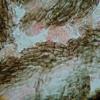
15-12-2025 21:11
 Hardware Tony
Hardware Tony
Small clavate hairs, negative croziers and IKI bb

15-12-2025 07:09
 Danny Newman
Danny Newman
indet. Rutstroemiaceae sp. on unk. fallen leavesMc

15-12-2025 15:54
 Johan Boonefaes
Johan Boonefaes
Unknown anamorph found on the ground in coastal sa

15-12-2025 15:48
 Danny Newman
Danny Newman
Melanospora cf. lagenaria on old, rotting, fallen

15-12-2025 07:05
 Danny Newman
Danny Newman
Pseudosclerococcum golindoi (det: Zotto)near Cosb

15-12-2025 11:49
 Danny Newman
Danny Newman
ITS sequences from the following two collections B

15-12-2025 12:34
 Danny Newman
Danny Newman
indet. Rhytismataceae on oak leafnear Purchase Roa

09-12-2025 12:06
 Andgelo Mombert
Andgelo Mombert
Bonjour,Je recherche l'article concernant Hypobryo
Mollisia ?
Baeza Yajaira,
17-02-2012 02:39
 Hello i get this Mollisia i guess i hope somebody would help me i dont have enough literature to support my idea here i have some pictures
Hello i get this Mollisia i guess i hope somebody would help me i dont have enough literature to support my idea here i have some pictures Ascospores (7-) 8 - 11 x 3 um
asci (55-) 56 - 65 (-70) x 6 - 8 um
paraphysis filiform with 2 um broad.
apothecia discoid yellowish with black margen, superficial on wood.
Hans-Otto Baral,
17-02-2012 07:25

Re : Mollisia ?
Hi
impossible with dead material, sorry. Where did you collect this, at a moist place? Which country? Is it some months ago? otherwise you could find living spores when mounted in water.
On your second pic you can see that the spores contain two big oil drops. Possibly they are confluent, but this is not very usual in Mollisia.
Zotto
impossible with dead material, sorry. Where did you collect this, at a moist place? Which country? Is it some months ago? otherwise you could find living spores when mounted in water.
On your second pic you can see that the spores contain two big oil drops. Possibly they are confluent, but this is not very usual in Mollisia.
Zotto
Baeza Yajaira,
18-02-2012 05:45

Re : Mollisia ?
i collected 1 month ago in cloud forest from mexico, i dont know much about Mollisia but macroscopic is similar to the genus or what do you think?
thnks
thnks
Hans-Otto Baral,
18-02-2012 09:36

Re : Mollisia ?
With subtropical Mollisias I have hardly any experience. But it looks like one, yes.
I see the apical ring on your photo but not in blue. You could add KOH and afterwards (after a bit washing with water) add Melzer again. Then it should be clearly blue.
Or you can use Lugol directly (without KOH). The ring looks a bit reddish, maybe it is hemiamyloid.
Zotto
I see the apical ring on your photo but not in blue. You could add KOH and afterwards (after a bit washing with water) add Melzer again. Then it should be clearly blue.
Or you can use Lugol directly (without KOH). The ring looks a bit reddish, maybe it is hemiamyloid.
Zotto
Baeza Yajaira,
29-02-2012 19:18

Re : Mollisia ?
Hello Zotto thnks for your correct opinions
but now i have other problem with Mollisia
i checked othe apothecia from the same collection i founded microscopic structures with changes in size and form. check out th pictures.
Ascospores 12 - 16 x 5 with 3 septa
Asci (72-) 85 - 115 x 10 - 11, blue pore in Melzer ..
macroscopic is the same..
apothecia sessil with black margin, disc lemon- yellow growing up in wood.
but now i have other problem with Mollisia
i checked othe apothecia from the same collection i founded microscopic structures with changes in size and form. check out th pictures.
Ascospores 12 - 16 x 5 with 3 septa
Asci (72-) 85 - 115 x 10 - 11, blue pore in Melzer ..
macroscopic is the same..
apothecia sessil with black margin, disc lemon- yellow growing up in wood.
Hans-Otto Baral,
29-02-2012 20:01

Re : Mollisia ?
Hi Yei
I see you live in an exotic world :-)
No idea, and surely not the same as before.
Zotto
I see you live in an exotic world :-)
No idea, and surely not the same as before.
Zotto
Baeza Yajaira,
29-02-2012 20:12

Re : Mollisia ?
hi!
hehehe Mexico is very varied =) thanks i will check more collections and get more data =P thanks so much
hehehe Mexico is very varied =) thanks i will check more collections and get more data =P thanks so much
Baeza Yajaira,
06-03-2012 18:21

Re : Mollisia ?
Hello Zotto.. i was reading some Denni's literature and maybe the specie is Mollisia ventosa for variability in septation 1 to 3 and the size of spores and asci very long.. its similiar to Mollisia graminea too just differs in the long of spores..
well this is for the exotic fungi XD
well this is for the exotic fungi XD
Hans-Otto Baral,
06-03-2012 18:30

Re : Mollisia ?
I am sure it is something else. M. ventosa I forms 1-septate spores when overmature. Yours looks more like a fungus that ejects 3-septate spores.






